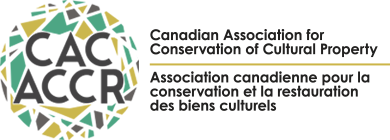J.CAC VOLUME 24 (1999)
Metal Ion Catalysed Oxidation of Skin: Treatment of the Fur Trim and Collar on a Velvet Cape
The black furskin trim and collar on a velvet cape from the late nineteenth or early twentieth century showed extensive tears and severe loss of tensile strength. The probable cause of degradation was metal ion catalysed oxidation. The furskin contained approximately 6,000 ppm of copper and 20,000 ppm of iron, most probably present as mordants. The dye could not be identified, but black dyes typically used on fur during this period were oxidation dyes such as Ursol D, or a combination of aniline black for the hair and logwood or an oxidation dye for the skin. Treatment consisted of physical stabilization through mechanical cleaning, backing with a Tetex polyester fabric sprayed with Beva 371 solution, and infilling with suede or dyed sheepskin. Various other treatment options, such as the use of stabilizers and metal chelates, are discussed even though they were not used. Oxygen depletion is suggested as a possible method of preventing future degradation, and the Russell effect discussed as a means of monitoring degradation.
Download: JCAC24 Dignard & Gordon